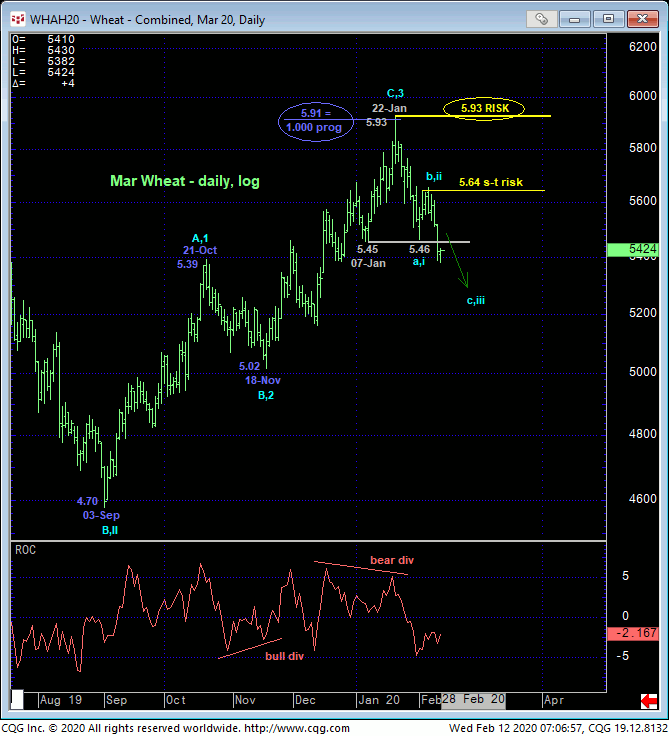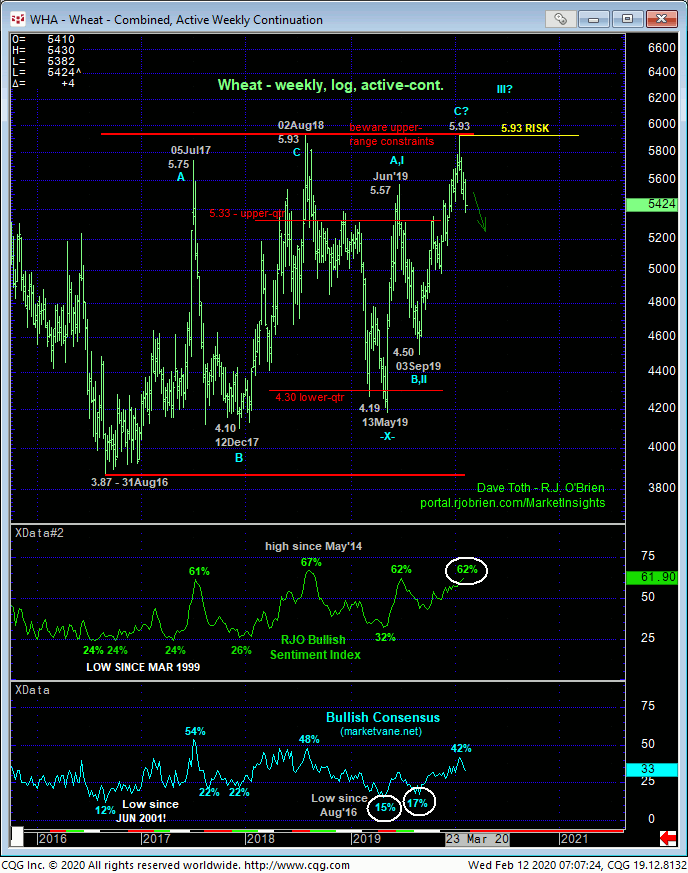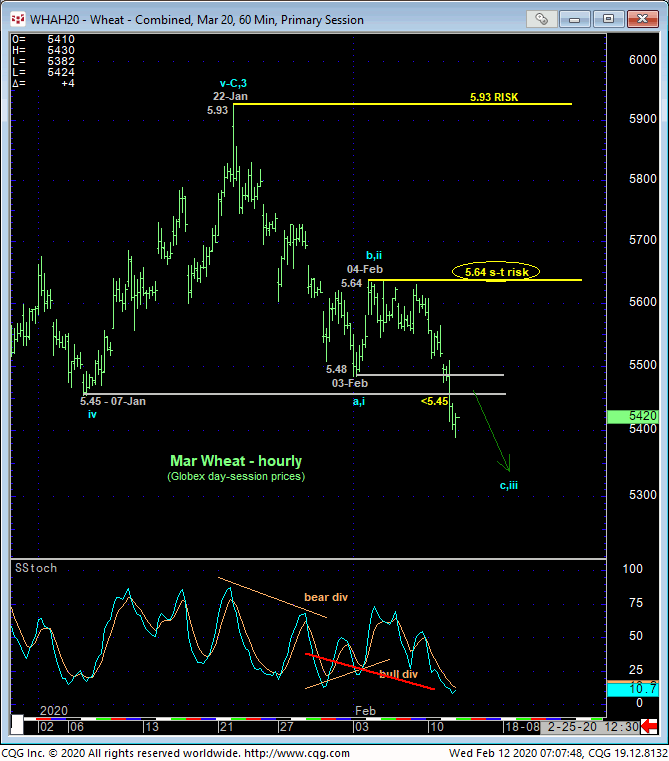
Yesterday’s clear break below 07-Jan’s 5.45 larger-degree corrective low and our key risk parameter confirms a bearish divergence in momentum of a scale sufficient to conclude 22-Jan’s 5.93 ENDED the major uptrend from at least 18-Nov’s 5.02 low. But for long-term lateral range and sentiment/contrary opinion factors we’ll discuss below, we believe the correction or reversal of Sep-Jan’s 4.70 – 5.93 rally may be at hand or even a major correction or reversal of the rally that dates from May’19’s 4./19 low. As a result of this larger-degree momentum failure, 22-Jan’s 5.93 high serves as our new longer-term risk parameter from which non-bullish decisions like long-covers and a new bearish policy can be objectively based and managed by longer-term players.

The weekly log active-continuation chart below shows the market’s clear rejection of the extreme upper recesses of the massive lateral range that has imprisoned it for the past 3-1/2-YEARS. Combined with the return to historically frothy sentiment levels that have warned of and accompanied each of the last three years’ intra-range peaks and reversals, it’s not hard to see the developing prospect for a more protracted correction or reversal from 22-Jan’s 5.93 high that could span weeks or even months.

From a short-term perspective, yesterday’s break below 03-Feb’s 5.48 initial counter-trend low leaves 04-Feb’s 5.64 high in its wake as the latest smaller-degree corrective high this market is now minimally required to recoup to defer or threaten a more immediate bearish count. Per such, this 5.64 level serves as our new short-term risk parameter from which shorter-term traders with tighter risk profiles can objectively base non-bullish decisions like long-covers and new bearish punts.
These issues considered, traders are advised to move to a new bearish policy from 5.45 OB with a recovery above 5.64 for shorter-term traders to step aside and commensurately larger-degree strength above 5.93 for long-term players to neutralize exposure ahead of a resumption of the major bull. In lieu of such strength, further and possibly accelerated losses are expected with former 5.45-to-5.48-area support considered new near-term resistance.


